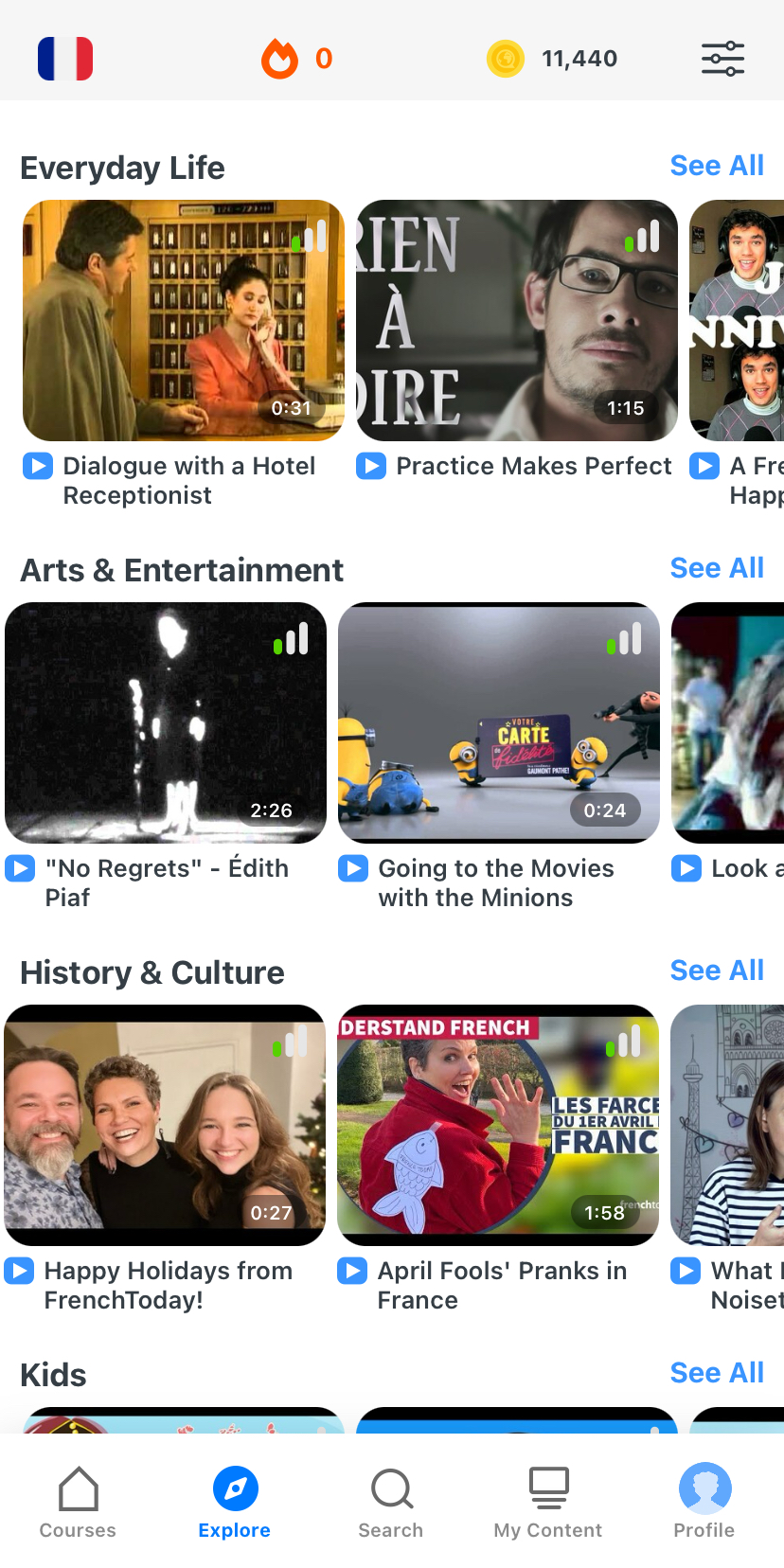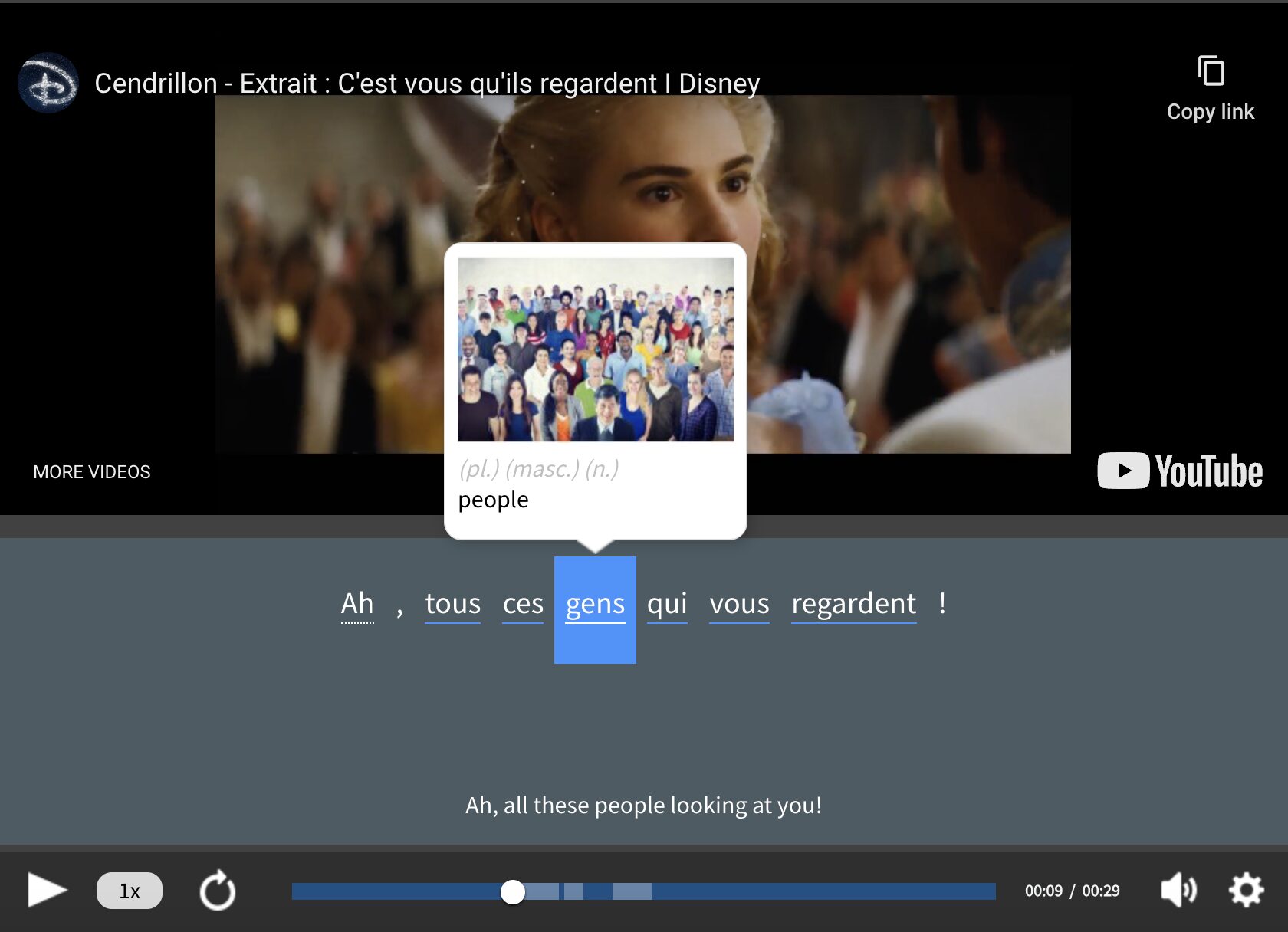A Simple Guide to French Semi-vowels

Download: This blog post is available as a convenient and portable PDF that you can take anywhere. Click here to get a copy. (Download)
What Are French Semi-vowels?
A semi-vowel (also known as a semi-consonant) is a letter or a set of letters that combines with one or more vowels to make a one-syllable consonant-vowel sound. They’re crucial for smooth pronunciation and syllable formation in French, helping to create fluid, natural-sounding speech.
You might see semi-vowels referred to as approximants (short for approximant consonants) or glides. This is because you glide very quickly between the consonant and vowel sounds that form the syllable.
The three main French semi-vowels are [j], [ɥ] and [w] in the phonetic alphabet. Let’s go over each of these and see some words where they appear.
Main French Semi-vowels
Here we’ll look at the three primary French semi-vowels. Please note that the letters and letter combinations presented below as common spellings often make these sounds, but not always.
[w]
| Sounds like: | the English "w" in "water" |
| Common spellings: | ou, oi, oy, w, wh |
| Found in words like: | oui (yes) and moi (me), bois (wood), foie (liver) and voix (voice) |
One of the first words you probably learned in French, oui (yes), features a prominent semi-vowel. It sounds similar to “we” in English but uses no w to produce its “w” sound.
Instead, the combined sound of ou—normally similar to “ew” in English—is added to the i (“ee”) sound in such rapid succession that you get a one-syllable word with both a consonant and a vowel sound.
[j]
| Sounds like: | the English "y" in "yes" |
| Common spellings: | y, ill, ail, aille, i |
| Found in words like: | pied (foot), bien (well), fille (girl), mieux (better) and yeux (eyes) |
[ɥ]
The [ɥ] sound is somewhat unique and doesn’t have a direct English equivalent.
| Sounds like: | the English "u" in "few" or the "u" in "hue" pronounced with rounded lips |
| Common spellings: | ui |
| Found in words like: | lui (him), nuit (night), huit (eight), huile (oil) and cuisine (kitchen) |
Pronouncing French Semi-vowels
With a few exceptions, if you were looking in a mirror while you said a semi-vowel with its accompanying vowel, you would see your lips move between a pucker position and a pulled-back smile.
Or—depending on which semi-vowel is paired with which full vowel in a word—from a pulled-back position or relaxed pout to a pucker. Either way, your mirror will show you the rapid forward-and-back lip movements of semi-vowels.
Resources for Mastering Semi-vowels in French
Here are a few resources for studying French semi-vowels and their pronunciation in isolation:
- “The Sounds of French”: If you watch about the first minute of this clip, you’ll get a breakdown of the three French semi-vowels—how they’re pronounced, how they look in IPA and how to distinguish them from similar sounds.
- Pronunciation of the semivowel / ɥ /: This video by Frenchsounds focuses specifically on this particular semi-vowel, explaining its pronunciation in depth and demonstrating multiple sound combinations within the French lexicon.
- Pronunciation of the French “yod” / j /: Also presented by Frenchsounds, this video performs the same service for the “yuh” semi-vowel sound in French.
Once you learn about French semi-vowels, you can practice recognizing them in context. Keep your eyes and ears open, and you’ll find semi-vowels in abundance in French media:
- Music and radio broadcasts: You can listen to French music and radio broadcasts from sources like Chérie FM and Radio France. This collection of French songs will also provide you with plenty of lyrical examples.
- French videos: Watching French videos on YouTube or movies on Netflix is an effective way to reinforce your recognition and pronunciation of French semi-vowels. You can both hear the sounds and see how they’re produced by native French speakers.
- FluentU: With this language learning program, you can hear French semi-vowels used in context and spot them in the interactive subtitles. You can also now turn any YouTube video into a language lesson with the help of FluentU.
FluentU takes authentic videos—like music videos, movie trailers, news and inspiring talks—and turns them into personalized language learning lessons.
You can try FluentU for free for 2 weeks. Check out the website or download the iOS app or Android app.
P.S. Click here to take advantage of our current sale! (Expires at the end of this month.)
You’ve heard what French semi-vowels sound like and seen where they show up. With some practice in the mirror or with a French-speaking friend, you’ll soon be saying them with confidence!
Download: This blog post is available as a convenient and portable PDF that you can take anywhere. Click here to get a copy. (Download)
And One More Thing...
If you like learning French at your own pace and from the comfort of your device, I have to tell you about FluentU.
FluentU makes it easier (and way more fun) to learn French by making real content like movies and series accessible to learners. You can check out FluentU's curated video library, or bring our learning tools directly to Netflix or YouTube with the FluentU Chrome extension.
One of the features I find most helpful is the interactive captions—you can tap on any word to see its meaning, an image, pronunciation, and other examples from different contexts. It’s a great way to pick up French vocab without having to pause and look things up separately.
FluentU also helps reinforce what you’ve learned with personalized quizzes. You can swipe through extra examples and complete engaging exercises that adapt to your progress. You'll get extra practice with the words you find more challenging and even be reminded you when it’s time to review!
You can use FluentU on your computer, tablet, or phone with our app for Apple or Android devices. Click here to take advantage of our current sale! (Expires at the end of this month.)











